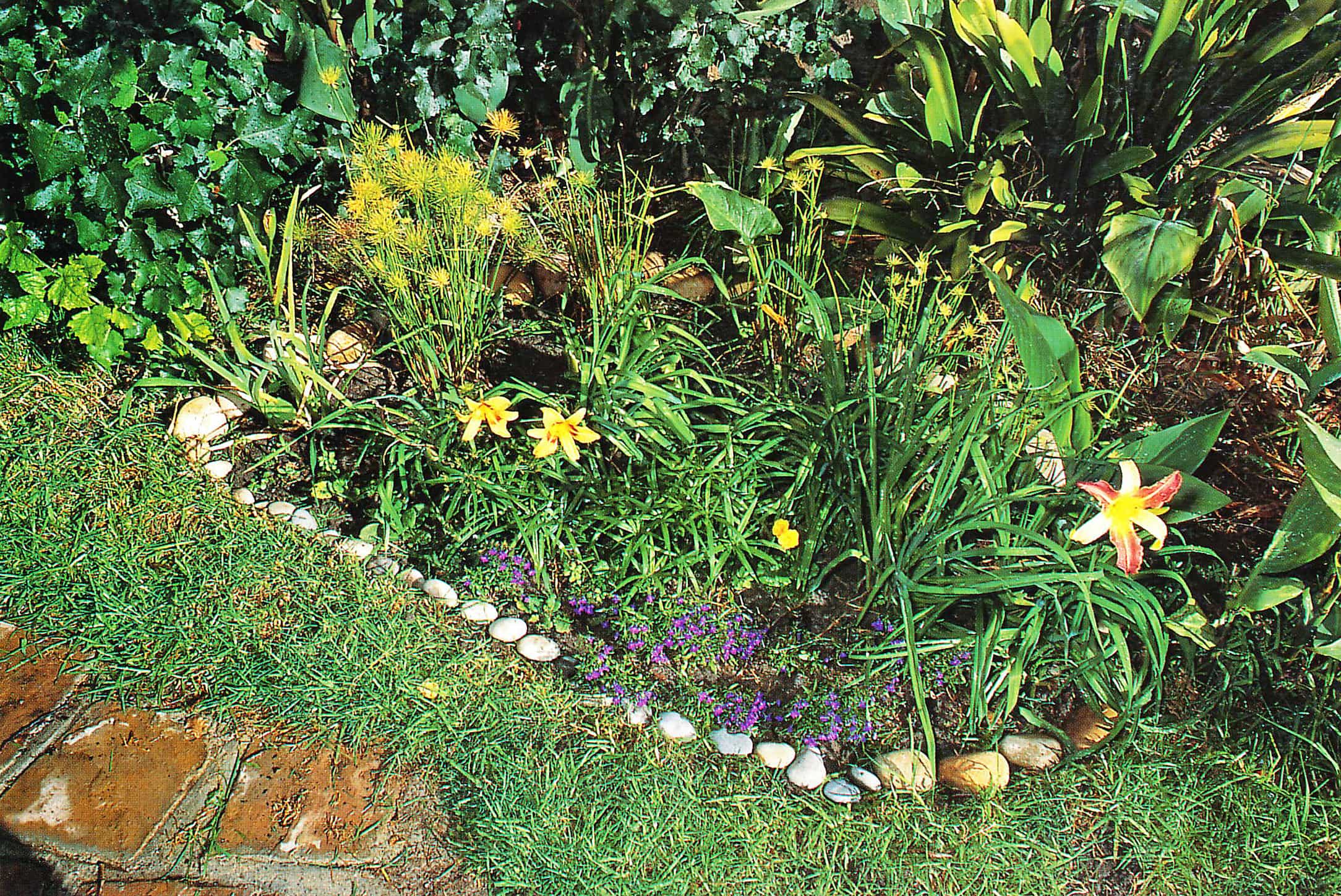
How To Build A Bog Garden
Penny wanted a small bog garden for the one corner of the yard, so this was one that I built over one weekend. Although built as a separate unit, this bog garden is close enough to the adjacent pond to appear as if it is a natural extension. Construction is elementary and will not take long. Any flexible liner is suitable and the bog garden will be most successful if you install underground irrigation to keep the soil moist in the most natural way. The most challenging part may be planting it with suitable species. Although a bog garden can extend right around the perimeter of a pond, it should not be too wide.
You could be here with these searches:
• Build a small bog garden
• Making a bog garden
• Making a bog garden for wild life
• Bog garden plants
• Wetland garden
• Swamp garden plants
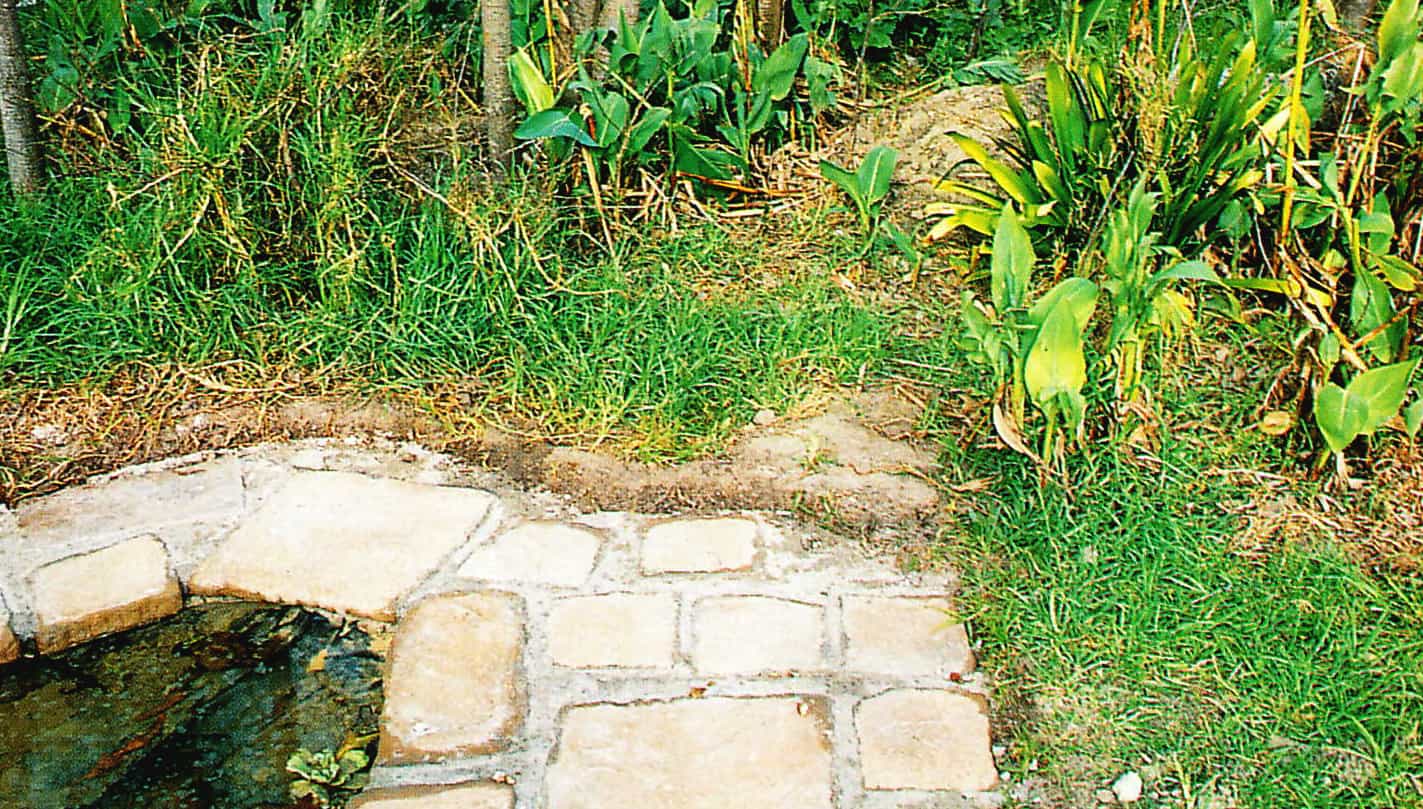
Materials
For a bog garden measuring about 2.5 m by 1.5 m (8 ft 2 in and 4 ft 11 in):
3 m x 2 m (10 ft x6 ft 7 in) 500 micron black polyethylene sheeting
125 kg (275 lb) gravel or crushed stone
2.5 m x 12 mm (8 ft 2 in x ½ in) semi-rigid tubing
1 x stopper
1 x hose connection
peat and river stones (optional)
Preparation
Items you will need to get for this project:
Digging spade
Pond liner
Irrigation pipe
Pebbles and gravel
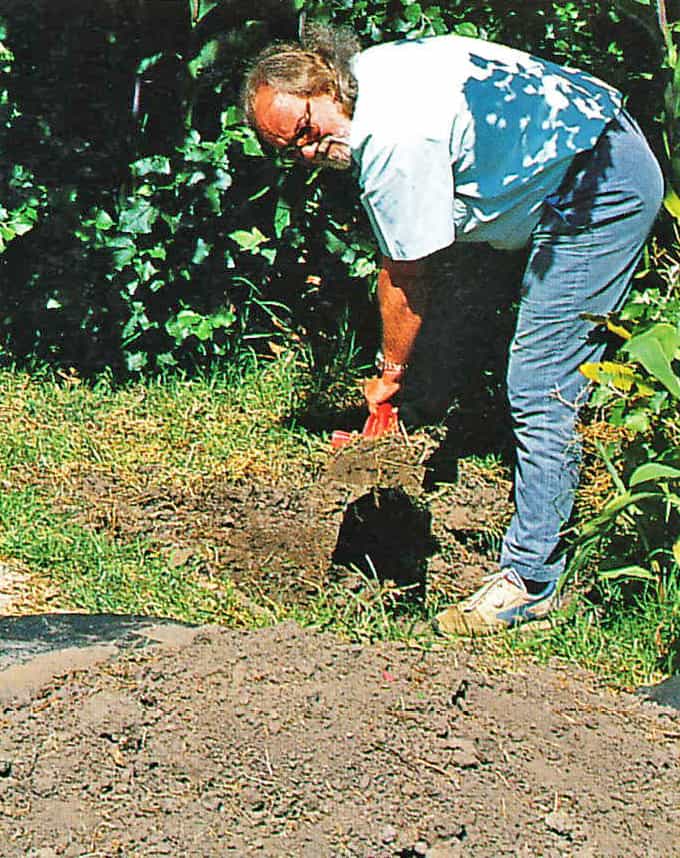
Step 1 – Dig out to 1ft deep
Decide where your garden is to be situated and excavate to a depth of at least 300 mm (1 ft). Keep the soil on one side, as you will later need to return at least half of it to the hole.
Excavation
There are quite a few liners available but here are a few we have picked out:
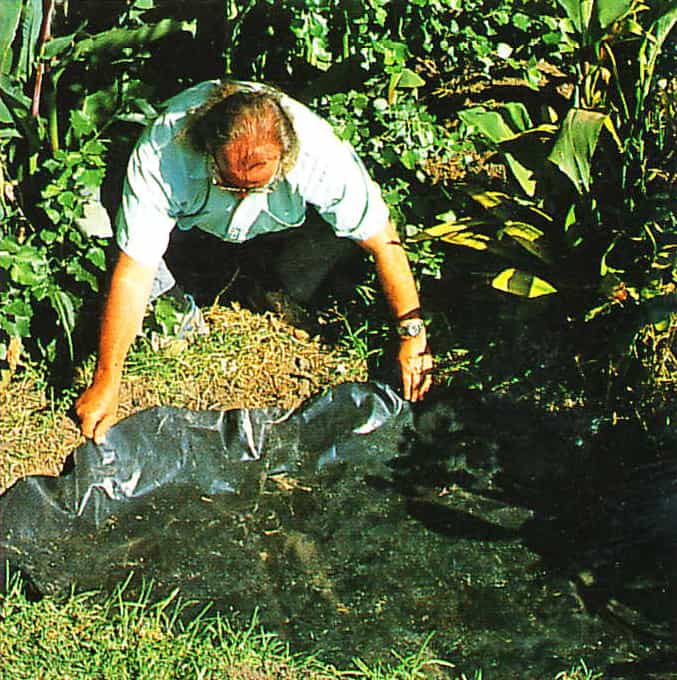
Step 2 – Cover with plastic sheet
Cover the excavation with plastic sheeting and bury the edges in the soil. It does not matter if the liner does not extend right to the top of the hole, but it must be securely anchored to prevent it from collapsing.
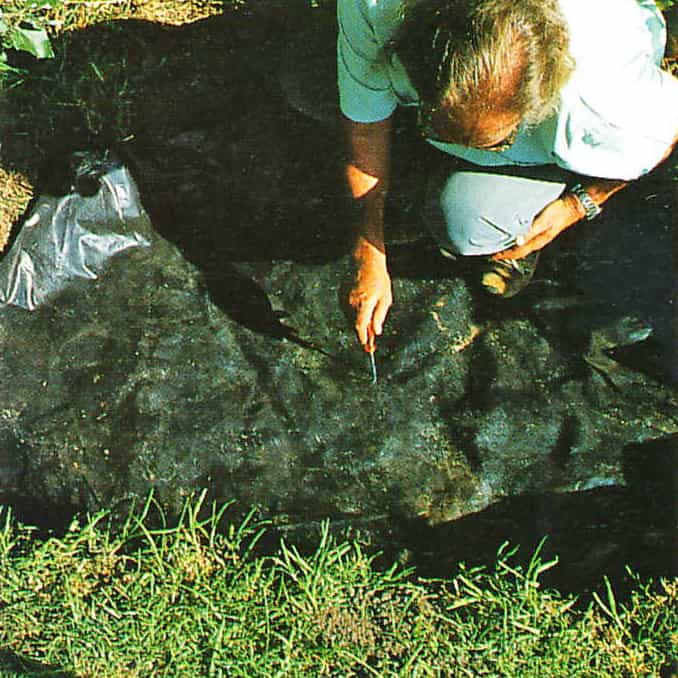
Step 3 – Poke drain holes
Make a few drainage holes in the bottom of the plastic with a small screwdriver or nail. The water will drain out surprisingly quickly if there are too many holes or if they are too big.
Drainage
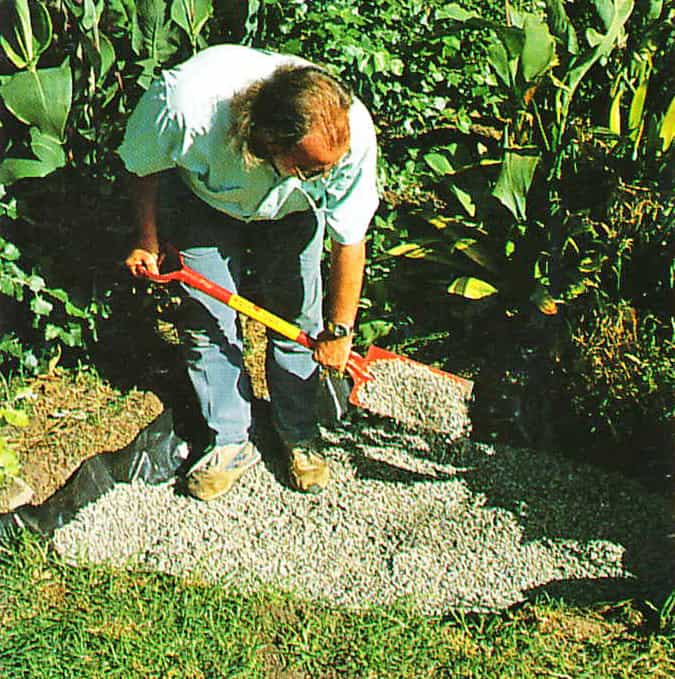
Step 4 – Gravel the base
Spread a layer of gravel or crushed stone over the base. This should be about 50 mm (2 in) thick
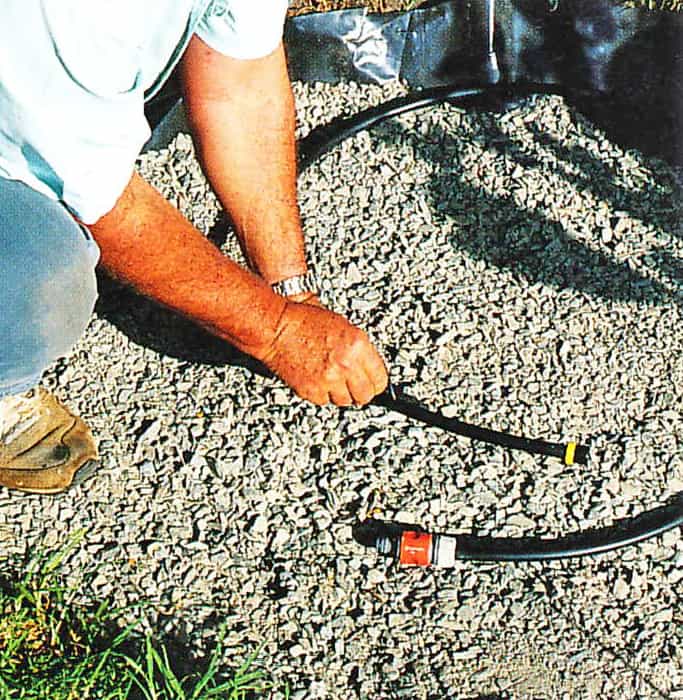
Step 5 – Attach hose
Perforate the length of semi-rigid tubing to supply irrigation and plug one end. Attach the hose connection to the other end and place the tubing in the hole, allowing it to protrude at a convenient yet inconspicuous point.
Planting
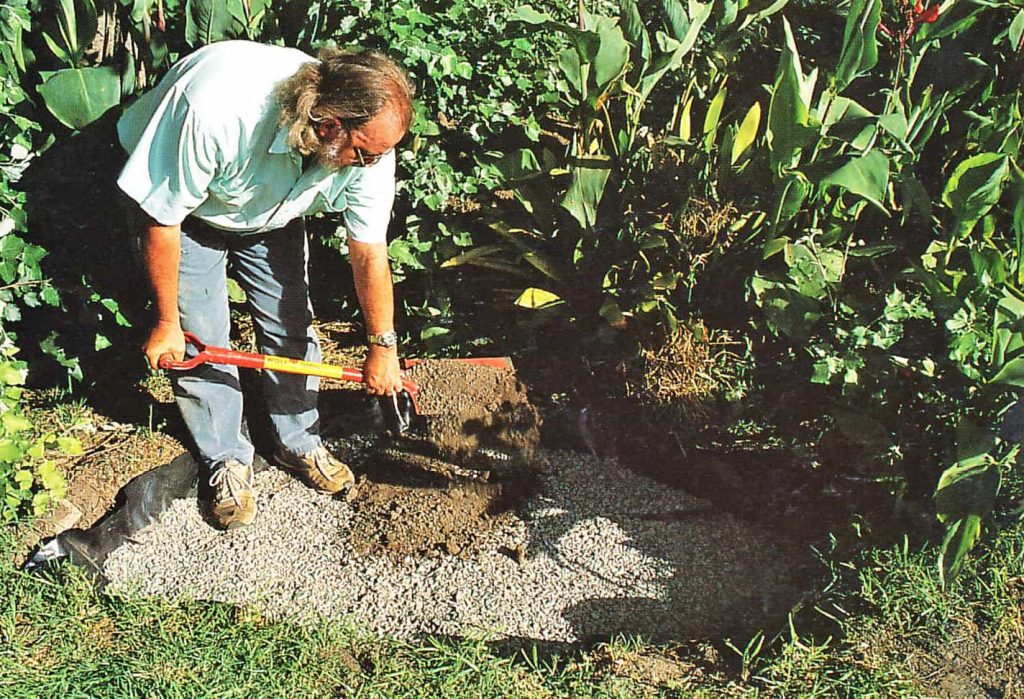
Step 6 – Mix soil
You can now return some of the soil to the hole, preferably mixed half and half with peat or a good quality mushroom compost.
Here are a few bog plants to fill your bog garden with:
Step 7. Finally plant the garden with suitable species. Remember to connect the hose to the buried tubing to give the plants a regular soaking, but do not allow the area to become waterlogged.
<< BACK TO: Step-By-Step


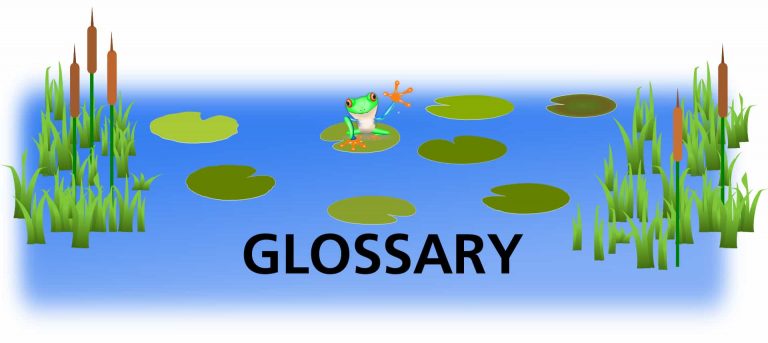




One Comment